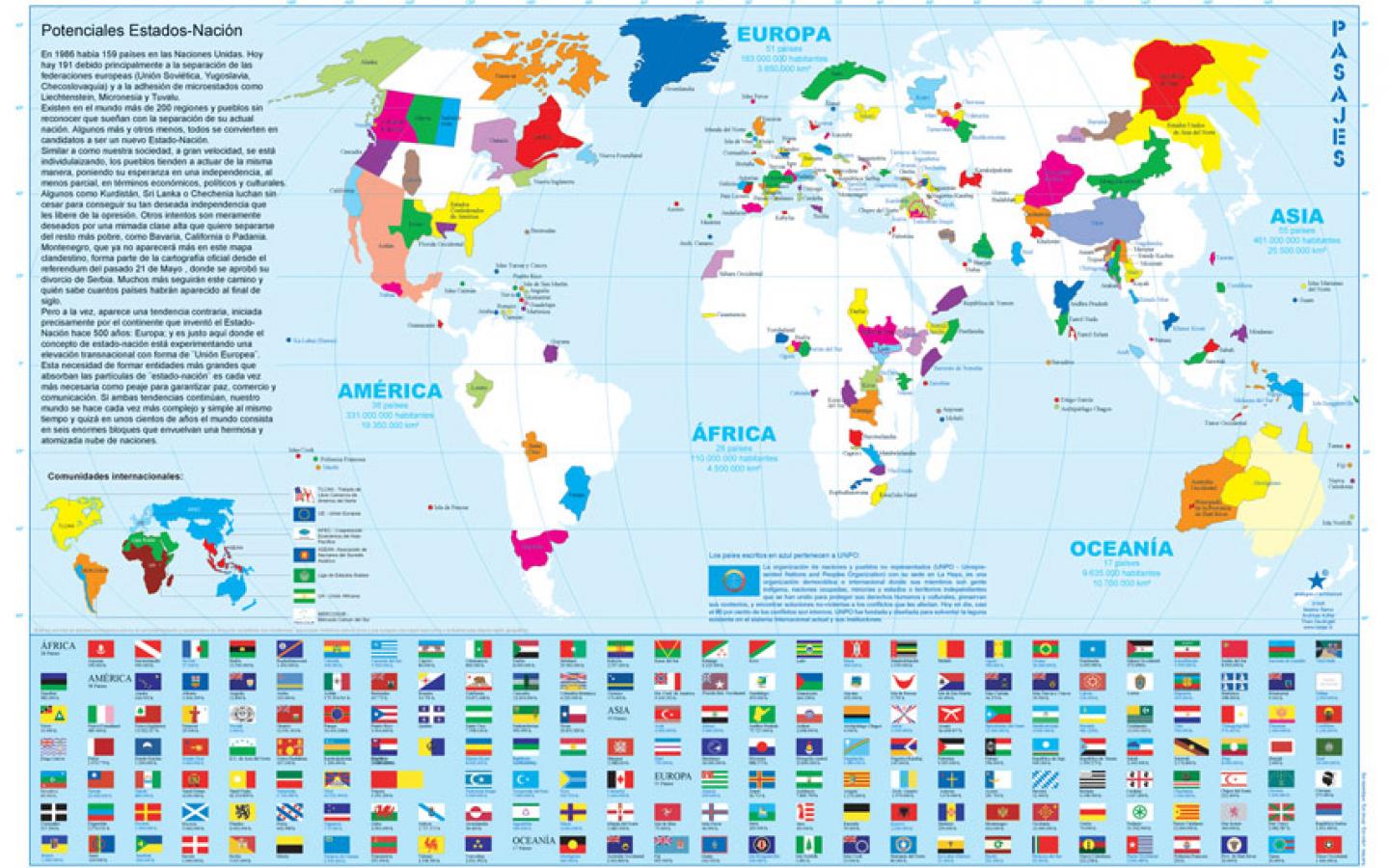In 1986 there were159 countries in the United Nations, today there are 191, thanks mainly to the break-up of federations in Europe plus the adhesion of microstates like Liechtenstein, Micronesia and Tuvalu.
Yet, worldwide there are more than 200 unrecognized regions and people which carry the seed of separation from their current nation and all of them are more or less possible candidates for becoming a new nation-state. Similar to the way how our society is individualizing at a rapid speed, people tend to do the same by seeking their hope in total or at least partly independence in economic, political and cultural terms. Some of them, like Kurdistan, Sri Lanka or Chechnya fight with all means to achieve a long desired independence, that liberates them from oppression while other attempts are merely wanted by a spoiled upper-class that wants to separate from the poor rest, like in Bavaria, California and Padania. The next candidate that could escape out of this clandestine map into the official cartography could be Montenegro which holds a referendum about its divorce from Serbia on May 21, 2006. Others will follow and who knows how many new countries will emerge in the upcoming century?
But at the same time a reverse trend is happening, initiated exactly by the continent that invented some 500 years ago the idea of the nation-state: Europe; and exactly here the concept of the nation-state is experiencing a trans-national upgrade in the form of the European Union. This need to form larger entities that absorb the particles of the nation-state becomes more and more necessary as toll for guaranteeing peace, trade and communication. If both trends continue, our world becomes more complex and simple at the same time and maybe in some hundred years the world consists out of only six major blocks that envelop a beautiful atomized cloud of regions.
2006


